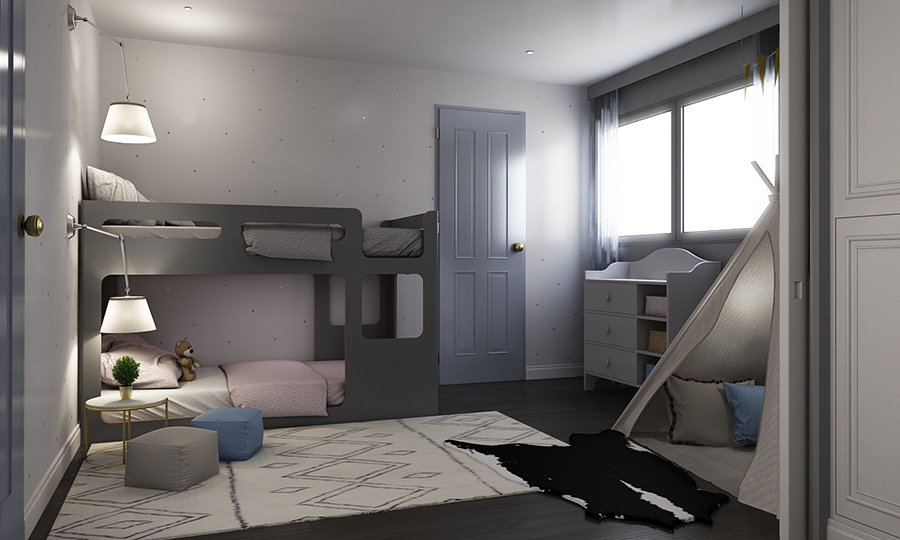3D rendering has become an essential tool in the design industry, providing a realistic representation of how a product or space will look once it’s complete. It’s commonly used in architecture, interior design, and product design, among other disciplines. With the help of 3D rendering, designers can experiment with different materials, colors, and finishes to create the perfect design. It’s also a great way to communicate their vision to clients or collaborators. If you’re not familiar with 3D rendering, this blog post will introduce you to the basics. We’ll cover what it is, how it’s used, and some of the benefits of using this technology in your work.
What is 3d rendering design?
3D rendering is the process of generating an image from a three-dimensional model. It is often used in computer games and movies as well as in design and architectural visualization. In rendering, the 3D model is typically converted into a 2D image through the use of polygons and shading algorithms.

Rendering can be divided into two general types: ray tracing and rasterization. Ray tracing involves tracing the path of light rays as they bounce off objects in the scene. Rasterization converts the 3D model into a 2D image by projecting it onto a 2D surface.
Both ray tracing and rasterization are valid methods for creating images from 3D models. However, each has its own advantages and disadvantages. Ray tracing is more realistic but is computationally intensive, while rasterization is faster but can produce artifacts such as aliasing.
The different types of 3d rendering design
There are different types of 3D rendering design, each with its own benefits and drawbacks. Here is a brief overview of the most popular types:
- Ray tracing: This is the most realistic type of 3D rendering, as it uses complex algorithms to simulate the behavior of light rays. However, it is also the most computationally expensive, making it impractical for real-time applications.
- Rasterization: This is a faster and more efficient way of rendering 3D images, as it only considers the geometric data of the scene. However, it can lead to artifacts such as aliasing and pixelation.
- Hybrid methods: These methods combine ray tracing and rasterization to get the best of both worlds – realistic images with fast rendering times.
- GPU-based renderers: These use the power of GPUs to speed up the rendering process, making them ideal for real-time applications such as video games. However, they can be limited by the amount of memory available on the GPU.
Pros and cons of 3d rendering design
Three-dimensional rendering is the process of creating an image from a three-dimensional model. This can be done in several ways, but the most common method is to use computer-aided design (CAD) software to create a two-dimensional drawing of the model, which is then converted into a three-dimensional image by a rendering program.

There are several advantages to using 3D rendering for product design. It allows designers to see how their products will look without having to build physical prototypes, which can save time and money. It also allows for more complex designs that would be difficult or impossible to create with traditional manufacturing methods. Additionally, renders can be created quickly and easily revised if necessary.
However, there are some drawbacks to using 3D rendering as well. First, it can be expensive if the designer does not have access to CAD software or a rendering program. Second, the quality of the renderings can vary depending on the skill of the designer and the quality of the software being used. Finally, renders do not always accurately represent how a product will look or function in real life, so designers need to take this into account when making decisions about their designs.
What are the benefits of using 3d rendering design?
When it comes to home design, 3D rendering is an essential tool. It allows you to see your designs in a realistic way, which can help you make better decisions about your space. Additionally, 3D rendering can help you communicate your ideas to others more effectively. Here are some other benefits of using 3D rendering in your home design process:
- Get a realistic sense of your space: With 3D rendering, you can get a realistic sense of how your space will look once it’s completed. This means that you can make changes to your designs before construction even begins.
- Save time and money: By getting an accurate sense of your space early on in the design process, you can save time and money by avoiding costly mistakes down the road.
- Make better decisions: Seeing your designs in a realistic way can help you make smarter decisions about things like layout, furniture selection, and finishes.
- Communicate your ideas more effectively: If you’re working with contractors or other designers, being able to show them a realistic 3D rendering of your ideas will help them understand what you’re envisioning more clearly.
- Get creative: With 3D rendering, the possibilities are endless! You can really let your imagination run wild and try out different design concepts that you might not have otherwise considered.

How to get started with 3d rendering design?
3d rendering design is the process of creating three-dimensional images from a given set of data. This data can be anything from a simple geometric shape to a more complex scene with multiple objects. The process of 3d rendering design generally consists of three main steps: modeling, lighting, and rendering.
Modeling is the first step in 3d rendering design and involves creating a three-dimensional model of the scene that you wish to render. This model can be created from scratch using a modeling program such as 3ds Max or Maya, or it can be generated using data from another source such as a CAD file. Once the model is created, it must be lit in order to create realistic shadows and highlights.
Lighting is the second step in 3d rendering design and involves adding light sources to the scene in order to create realistic lighting effects. Light sources can be placed manually or they can be generated automatically by the rendering software. After the light sources have been placed, the next step is to render the image.
Rendering is the final step in 3d rendering design and involves generating a two-dimensional image from the three-dimensional model. Rendering can be done using different algorithms depending on the desired results. Some common rendering algorithms include ray tracing and rasterization.
Conclusion
3D rendering is a process of creating images from 3D models. This technology has revolutionized the graphic design industry, and it shows no signs of slowing down. If you’re interested in learning more about 3D rendering or graphic design in general, be sure to check out our other articles on the subject.





